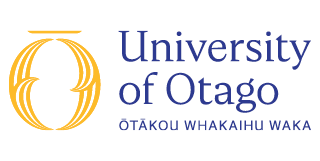Overview
Anatomy of the head (including basic neuroanatomy) spine and skin relevant to the clinical practice of surgery and radiology. Includes regional cadaver dissection.
The PGDipSurgAnat offers medical graduates interested in pursuing a career in surgery or radiology the opportunity to study and obtain a higher qualification in clinically relevant anatomy.
About this paper
| Paper title | Head, Spine, Neuroanatomy and Skin |
|---|---|
| Subject | Surgical Anatomy |
| EFTS | 0.25 |
| Points | 30 points |
| Teaching period | 1st Non standard period (22 July 2024 - 15 November 2024) (Distance learning) |
| Domestic Tuition Fees ( NZD ) | $3,103.25 |
| International Tuition Fees | Tuition Fees for international students are elsewhere on this website. |
- Pre or Corequisite
- SUAN 701 or SUAX 701
- Limited to
- PGDipSurgAnat
- Eligibility
- Applicants must have a Bachelor of Medicine and Bachelor of Surgery (MB ChB) degree from a university in New Zealand or an equivalent overseas qualification and must be registered with the Medical Council of New Zealand (or equivalent).
- Contact
- More information link
- View more information about the Postgraduate Diploma in Surgical Anatomy
- Teaching staff
2024 Teaching Staff to be confirmed - please use the more information link for further information.
- Paper Structure
- Six weeks distance learning; one week residential teaching.
- Teaching Arrangements
This Distance Learning paper is a combination of remote and in-person teaching.
- Textbooks
Essential:
- McMinn, Last's Anatomy: Regional and Applied (9th edn).
Highly Recommended:
- Drake et al, Gray's Anatomy for Students (2010).
Highly Recommended:
- Gilroy et al, Thieme Atlas of Anatomy (2008).
or - Agur & Dalley, Grant's Atlas of Anatomy (12th edn).
or - Netter, Atlas of Human Anatomy (4th edn).
- Graduate Attributes Emphasised
- Lifelong learning, Communication, Critical thinking, Research, Self-motivation.
View more information about Otago's graduate attributes. - Learning Outcomes
Students who successfully complete the paper will:
- Develop a sound knowledge of clinical anatomy relevant to common operative and interventional procedures
- Understand and be able to discuss surgically relevant regional anatomy (what structures are encountered in each region, their key anatomical relationships, course and direction, and what human anatomical variations are commonly encountered)
- Develop a familiarity with the anatomy of common diagnostic and therapeutic procedures and common surgical operations - in particular, safe instrumentation and surgical access, specific anatomical hazards or common operative approaches or techniques, and common/serious anatomical errors
- Develop an awareness of the principles of developmental anatomy, structure, histology and function of organs and structures
- Develop the tools required to undertake their own research into areas of speciality-specific anatomy
